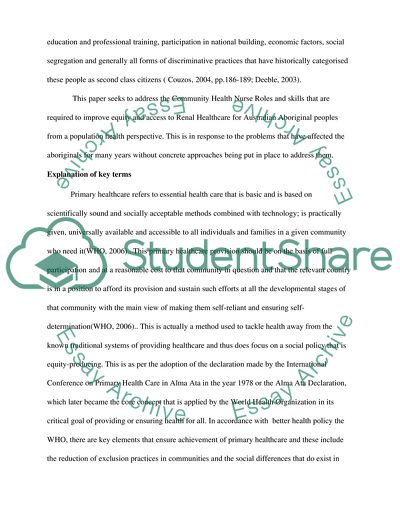Cite this document
(“Community Health Nurse Roles Essay Example | Topics and Well Written Essays - 2750 words”, n.d.)
Retrieved from https://studentshare.org/nursing/1432829-examine-community-health-nurse-roles-and-skills-required-to-improve-equity-and-access-to-renal-health-care-for-australian-aboriginal-peoples-from-a-population-health-perspective
Retrieved from https://studentshare.org/nursing/1432829-examine-community-health-nurse-roles-and-skills-required-to-improve-equity-and-access-to-renal-health-care-for-australian-aboriginal-peoples-from-a-population-health-perspective
(Community Health Nurse Roles Essay Example | Topics and Well Written Essays - 2750 Words)
https://studentshare.org/nursing/1432829-examine-community-health-nurse-roles-and-skills-required-to-improve-equity-and-access-to-renal-health-care-for-australian-aboriginal-peoples-from-a-population-health-perspective.
https://studentshare.org/nursing/1432829-examine-community-health-nurse-roles-and-skills-required-to-improve-equity-and-access-to-renal-health-care-for-australian-aboriginal-peoples-from-a-population-health-perspective.
“Community Health Nurse Roles Essay Example | Topics and Well Written Essays - 2750 Words”, n.d. https://studentshare.org/nursing/1432829-examine-community-health-nurse-roles-and-skills-required-to-improve-equity-and-access-to-renal-health-care-for-australian-aboriginal-peoples-from-a-population-health-perspective.


